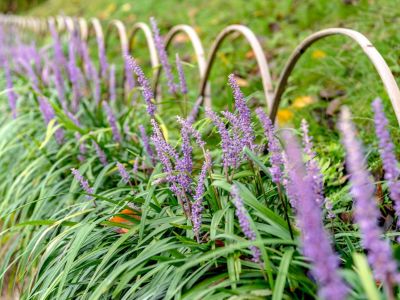Choosing a Lawn Alternative
Before ripping out the lawn, it’s advisable to first consider the growing conditions in your yard and what specific needs you have for your property. Start by asking yourself these five key questions:
Are there problem areas that are not conducive to grass cultivation, or would you like to replace the entire lawn? Is the area sunny, shady, or a mix of both? Does the yard drain well or are there wet spots after a heavy rain? Do you need to walk on the lawn, or do you have children and pets who regularly use the yard? Are there any zoning regulations or homeowner’s association rules that limit lawn height or prohibit non-standardized landscaping?
Once you have the answers, you can begin searching for the lawn care alternative that meets your needs.
All-Season Lawn Alternatives
From USDA zone 8 in the southwest corner of Tennessee to zone 5 in the uppermost part of Illinois, climate can vary widely throughout the Ohio Valley. Groundcover plants Tennessee gardeners use may be evergreen in their area, but deciduous farther north. When looking for a turf replacement which retains its leaves during the winter, consider these evergreen lawn alternatives. Illinois to Tennessee gardeners and everyone in between will find these plants stay green year-round and most are deer resistant. All are hardy in USDA growing zones 5 to 8.
Creeping Thyme (Thymus praecox) Tolerant of light foot traffic, Creeping Thyme grows in full sun or partial shade. It reaches a maximum height of 6 inches (15 cm.) and is considered safe for children and pets. Dwarf Tickseed (Coreopsis auriculata) The spring-blooming yellow flowers of Dwarf Tickseed lend an element of color to the lawn, but the blooms do attract bees. This 6 to 9 inch (15-23 cm.) tall plant is non-toxic to children and pets. English Chamomile (Chamaemelum nobile) You won’t need to mow this 6 inch (15 cm.) aromatic herb. English Chamomile tolerates light foot traffic but is toxic to pets. Japanese Spurge (Pachysandra terminalis) Although this 8 to 12 inch (20-31 cm.) tall, shade-loving plant is non-toxic to children and pets, the sap of Japanese spurge can be irritating to the skin. Creeping Phlox (Phlox subulata) Tolerant of foot traffic, Creeping Phlox reaches a maximum height of 6 inches (15 cm.). It’s non-toxic to children and pets, but the bright spring blossoms do attract bees. Partridgeberry (Mitchella repens) Only 2 inches (5 cm.) tall, shade-loving Partridgeberry won’t need mowed and is non-toxic. Periwinkle (Vinca minor) At 6 inches (15 cm.) tall, Periwinkle won’t need to be mowed. The shiny dark, green foliage and purple flowers are toxic to humans and pets. Snow in Summer (Cerastium tomentosum) Although it’s not tolerant of foot traffic, Snow in Summer has dainty white flowers and grows in full sun and partial shade. At 6 inches (15 cm.) tall it doesn’t need to be mowed but can become invasive. Woodland Stonecrop (Sedum ternatum) Non-toxic and tolerant of foot traffic, Woodland Stonecrop is a low-growing, 2 to 3 inch (5-8 cm.) tall native.
Groundcover Plants – Illinois to Tennessee
If you’re only planning on replanting parts of the lawn, such as slopes or under trees, consider the following groundcover plants. Indiana, Illinois, and other upper Midwest gardeners may find some are deciduous in their area. Others are not hardy in all locations in the Ohio Valley.
Amethyst in Snow (Centaurea montana) Bearberry (Arctostaphylos Uva-Ursi) Blue Catmint (Nepeta racemosa) Bugleweed (Ajuga reptans) Bunchberry Dogwood (Cornus Canadensis) Canada Wild Ginger (Asarum Canadense) Common Blue Violet (Viola Sororia Willd) Corsican Mint (Mentha requienii) Goldenstar (Chrysogonum virginianum) Lily of the Valley (Convallaria majalis) Moss (Various species) Running Strawberry Bush (Euonymus obovatus) Spotted Deadnettle (Lamium maculatum) Striped Cream Violet (Viola striata) Sweet Woodruff (Galium odoratum) Virginia Creeper (Parthenocissus quinquefolia) White Clover (Trifolium repens)
